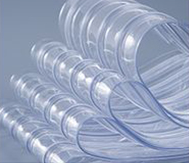- Afrikaans
- Albanian
- Amharic
- Arabic
- Armenian
- Azerbaijani
- Basque
- Belarusian
- Bengali
- Bosnian
- Bulgarian
- Catalan
- Cebuano
- Corsican
- Croatian
- Czech
- Danish
- Dutch
- English
- Esperanto
- Estonian
- Finnish
- French
- Frisian
- Galician
- Georgian
- German
- Greek
- Gujarati
- Haitian Creole
- hausa
- hawaiian
- Hebrew
- Hindi
- Miao
- Hungarian
- Icelandic
- igbo
- Indonesian
- irish
- Italian
- Japanese
- Javanese
- Kannada
- kazakh
- Khmer
- Rwandese
- Korean
- Kurdish
- Kyrgyz
- Lao
- Latin
- Latvian
- Lithuanian
- Luxembourgish
- Macedonian
- Malgashi
- Malay
- Malayalam
- Maltese
- Maori
- Marathi
- Mongolian
- Myanmar
- Nepali
- Norwegian
- Norwegian
- Occitan
- Pashto
- Persian
- Polish
- Portuguese
- Punjabi
- Romanian
- Russian
- Samoan
- Scottish Gaelic
- Serbian
- Sesotho
- Shona
- Sindhi
- Sinhala
- Slovak
- Slovenian
- Somali
- Spanish
- Sundanese
- Swahili
- Swedish
- Tagalog
- Tajik
- Tamil
- Tatar
- Telugu
- Thai
- Turkish
- Turkmen
- Ukrainian
- Urdu
- Uighur
- Uzbek
- Vietnamese
- Welsh
- Bantu
- Yiddish
- Yoruba
- Zulu
Creating Clear and Simple Overlay Sheets for Various Projects
The Versatility of Transparent Sheets A Window to Creativity
In the realm of art, design, and education, transparent sheets have carved a niche for themselves as versatile tools that inspire creativity and innovation. These thin, often plastic materials, can be found in a variety of settings, ranging from classrooms to professional studios, offering endless possibilities for expression and functionality.
One of the primary advantages of transparent sheets is their unique property of being semi-transparent or fully transparent. This allows for layers of information to be presented simultaneously, which can be especially beneficial in educational contexts. Teachers often use transparent sheets to enhance their lessons; by overlaying diagrams or text over a projector, complex ideas become easier to understand. Students can engage more deeply with the material as they see how different concepts relate to one another visually, fostering a more interactive and dynamic learning environment.
Beyond education, these sheets have become indispensable in the world of art and design. Artists utilize transparent sheets for various purposes, from creating shadows and highlights in their paintings to designing intricate crafts. The ability to layer images or colors can result in stunning visual effects, adding depth and dimension to their work. Furthermore, graphic designers employ transparent sheets in mock-ups and prototypes, enabling them to present their designs more effectively by overlaying visual elements and considering different layouts without committing to a permanent design.
transparent sheet

In addition to artistic applications, transparent sheets serve practical purposes in various professional fields. In architecture and engineering, for example, transparency allows architects to present models and blueprints in a way that clients can easily visualize the final product. The layering of transparent sheets can represent various structures or materials, providing a clearer picture of how different elements will interact in a real-world setting. This not only improves client communication but also enhances collaboration among team members as they work together to refine designs.
Moreover, in the realm of marketing and advertising, transparent sheets are utilized to create eye-catching displays and promotional materials. The transparency allows for creative layering of images and text, resulting in striking visuals that capture the attention of potential customers. Businesses often use these sheets in trade shows and exhibitions, where they can showcase their products and services in visually compelling ways, creating an immersive experience for attendees.
Furthermore, the rise of technology has also spurred innovation in the use of transparent sheets. With advancements in printing technology, it is now possible to create customized transparent sheets that can include high-quality images, logos, and designs tailored to specific needs. This personalization adds an extra layer of engagement, allowing individuals and businesses to convey their unique message or identity effectively.
In conclusion, transparent sheets are more than just static pieces of plastic; they are dynamic tools that bridge the gap between imagination and reality. From educational settings to professional design, art, and marketing, their applications are as diverse as those who use them. By harnessing the power of transparency, individuals can enhance their creativity, communicate more effectively, and create visually stunning outputs that leave a lasting impact. As we continue to explore new ways to utilize these versatile sheets, the potential for innovation and creativity remains boundless.
-
High-Quality PVC Strip Bulk Rolls – Anti-Insect, Plastic & Standard PVC Strip Curtains for Industrial UseNewsJul.08,2025
-
High-Quality Plastic Strip Door Curtain La Gama – Keep Spaces Fresh and HygienicNewsJul.08,2025
-
Plastic Flaps for Freezer Doors – Durable & Efficient Plastic Strips and CurtainsNewsJul.08,2025
-
Industrial Plastic Curtains for Efficient Temperature Control Durable Strip Doors for Butchers & RefrigeratorsNewsJul.07,2025
-
High-Quality PVC Door Curtain – Magnetic & Transparent Options for Efficient SeparationNewsJul.07,2025
-
High-Quality 냉장실용 커튼 for Efficient Cooling Durable PVC Coated Wire Mesh RollosNewsJul.06,2025



